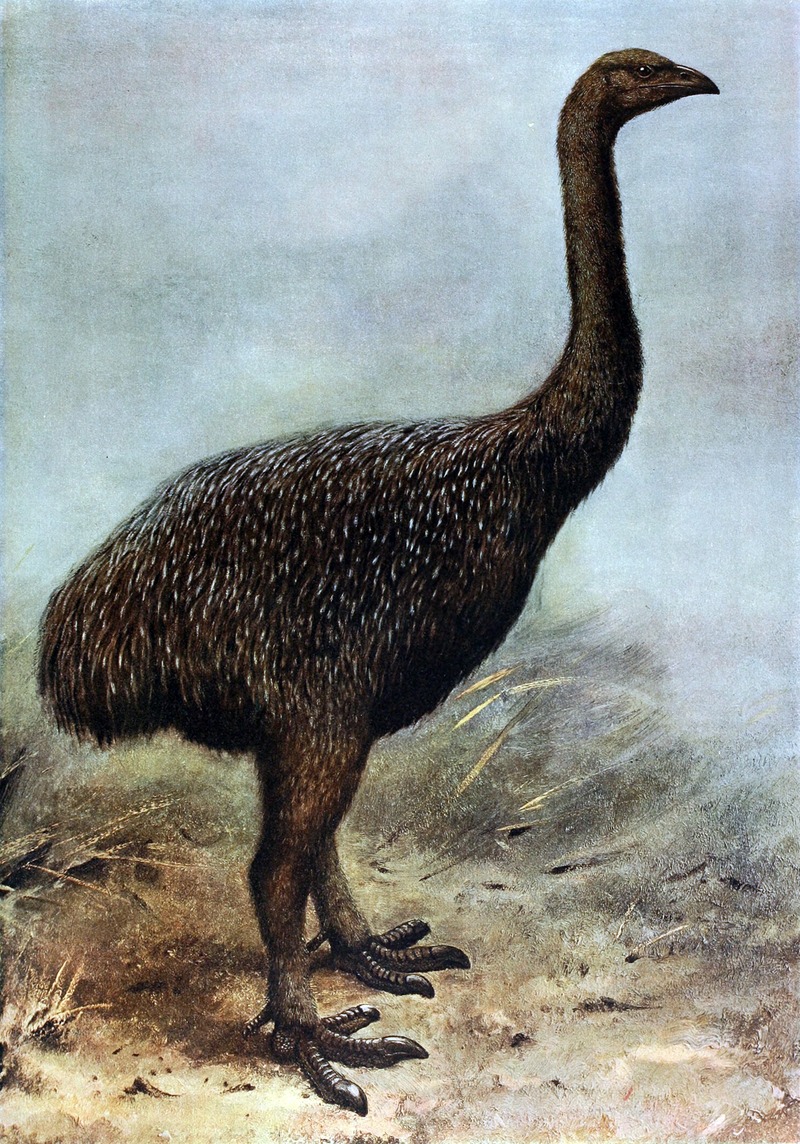Upland Moa (Megalapteryx didinus) Description
English: In Rothschild's book 'Extinct Birds' this moa has been given the scientific name Megalapteryx huttoni. This is a jr synonym of Megalapteryx didinus, the Lesser Megalapteryx or Upland Moa. It was endemic to New Zealand. It was the last moa species to become extinct, vanishing around 1500; possibly, some isolated populations managed to persist until about the early 19th century.
One-Quarter Natural Size—restored drawing from feathers and mummified remains.
Plate 42
Source Transferred from Commons. Extinct birds : an attempt to unite in one volume a short account of those birds which have become extinct in historical times : that is, within the last six or seven hundred years : to which are added a few which still exist, but are on the verge of extinction. By Lionel Walter Rothschild, 2nd Baron Rothschild (8 February 1868 – 27 August 1937). (http://www.archive.org/details/extinctbirdsatte00roth)
Date 1907
Author George Edward Lodge https://en.wikipedia.org/wiki/George_Edward_Lodge
Source: https://en.wikipedia.org/wiki/File:Megalapteryx.png
The upland Moa (Megalapteryx didinus) was a species of Moa bird endemic to New Zealand. It was a member of the ratite family, a type of flightless bird with no keel on the sternum. It was the last Moa species to become extinct, vanishing around 1500 AD. At less than 1 meter tall and about 17 to 34 kilograms, the upland moa was among the smallest of the Moa species. Unlike other Moas, it had feathers covering all of its body but the beak and the soles of its feet, an adaptation to its cold environment. Order: Dinornithiformes, Family: Megalapterygidae.
Synonyms:
Dinornis didinus Owen 1882 nomen nudum
Dinornis didinus Owen, 1883
Megalapteryx benhami Archey, 1941
Megalapteryx hamiltoni Rothschild, 1907
Megalapteryx hectori Haast, 1886
Megalapteryx huttoni (Rothschild, 1907)
Megalapteryx tenuipes Lydekker, 1891
Anomalopteryx didina (Owen 1883) Lydekker, 1891
Palaeocasuarius (Forbes, 1892)
Palaeocasuarius velox Rothschild 1907
Palaeocasuarius elegans Rothschild 1907
Palaeocasuarius haasti Rothschild 1907
